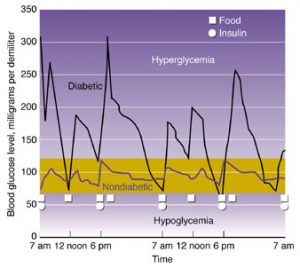The Normal Fasting Glucose Level
Not long ago, a normal fasting glucose level was never a chief concern for very many people, as the main health worries of the day were heart disease, cancer, and high blood pressure. Sure there have always been diabetics, but in recent times the number of people diagnosed with diabetes has skyrocketed, even as the number of people diagnosed with heart disease, hypertension, and many forms of cancer have begun to decrease. If the current trend continues, diabetes and diabetes related issues may well become the most important health care concerns of the new millennia.…

